| Photojournal
- 13 July
2004
Point
Bob, again
| Well, the
Monday trip to Point Roberts had turned up no Rhinocerous Auklets,
so I asked around to see if the feeding Auklets had packed up and
headed home.
They hadn't. I had
somehow missed them, but they were still there.
And the word came back
to me...go at high tide.
So I quickly checked
the tides and found out that the high high tide (we get two high
tides, a low one and a high one) would be around 6:30pm on Tuesday.
It had been low tide when I had gone on Monday. Maybe this accounted
for my aukletlessness.
6:30pm was conveniently
a little bit after work, so around 4:30 I left work and headed
for "Point Bob" again. There was a different border
guard there, but my U.S. passport and birdwatching story got me
in with no trouble. I got to the park around 5:30, got a soda
water from the snack bar there, and went to the beach at Lighthouse
Park.
Standing right in front
of the parking lot, every now and then I would see a bird that
I thought might be a Rhino, but it would quickly dive. Maybe it
was the Harlequin Ducks again. I tried unsuccessfully to catch
one of these guys with my camera for about thirty minutes.
I decide to head down
the rocky beach, and after about a five-minute walk from where
I started, there is the lighthouse after which the park is named,
and the shore turns from southward to eastward. Right there, to
the south of the point, about 30 to 40 meters out, there were
Rhinos! They were mixed in with seagulls, but they were definitely
Rhinocerous Auklets...all the field marks were visible. Here's
one of the blighters, behind the pack of gulls on the right.
|
|
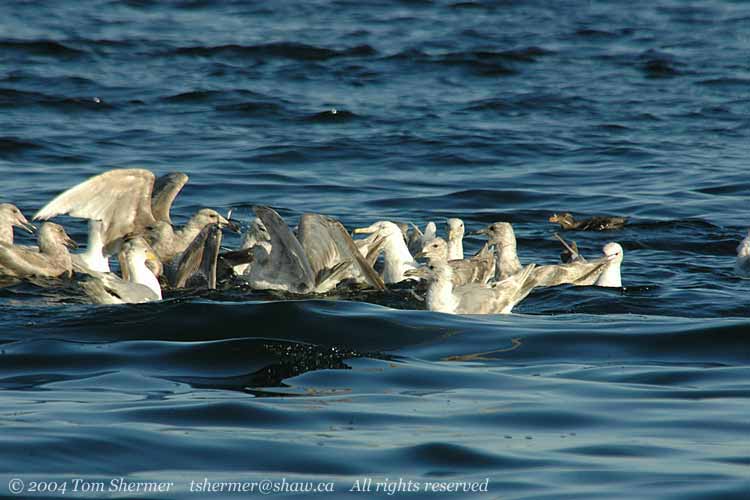 |
| That's about
where they were hanging out...on the fringes of packs of gulls.
The fish that were running (which, I think I may have said, people
think are Sand Lances) would sometimes (in a school) come close
to the surface and some lucky gull would pull one from the water,
or smack his face into the water trying. Then nearby gulls would
notice and rush over to the gull with the fish, making loud gull
calls and trying to steal the fish from the other gull. Other gulls
would be attracted by the calling, and soon a pack like the above
one would be formed, with gulls chattering noisily. After a little
bit the ruckus would die down, and the gulls of the pack would drift
away from one another. This had the effect of spreading them out
over more of the surface of the ocean, so that if the fish came
close to the surface again, a gull would likely be near, and the
whole commotion would start again. At any one time I could see two
or three such packs of gulls.
The Rhinos were in
better shape, though. Auklets can dive and swim underwater. They
would just follow the fish, even when the fish were underwater.
The problem is that the Rhinos didn't stay on the surface long,
because dinner wasn't on the surface. Here's one guy I did catch
sitting still on the surface, though.
|
|
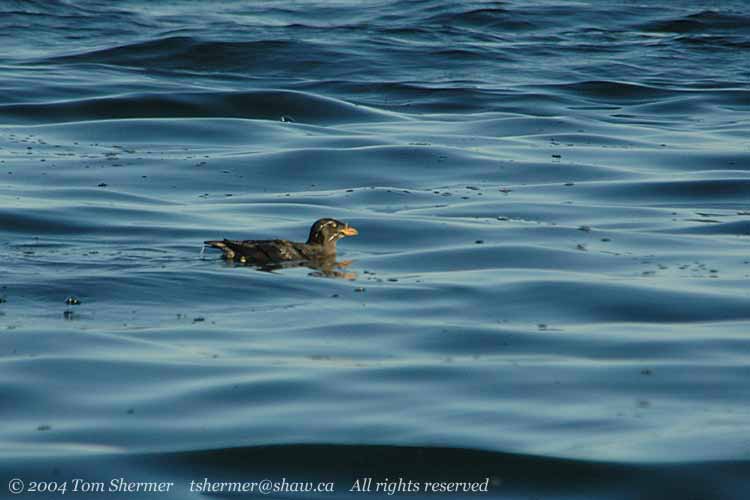 |
|
Very rarely did I hear
them make any calls, but they did make a few.
With all that diving
down after fish, it's not a surprise that some of them came up
with fish. The etiquette of fish holding seemed well-established
in Rhinos. Normally, one should hold a fish by keeping its head
in your bill, like this fellow.
|
|
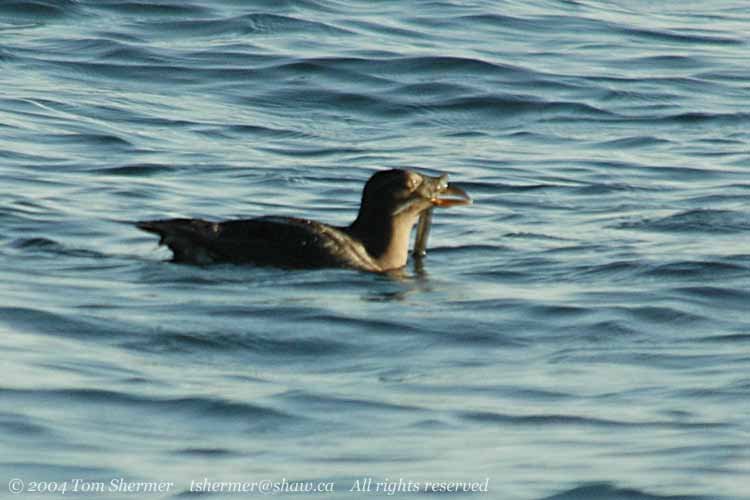 |
|
There were the few
oddballs, holding fish by the middle.
|
|
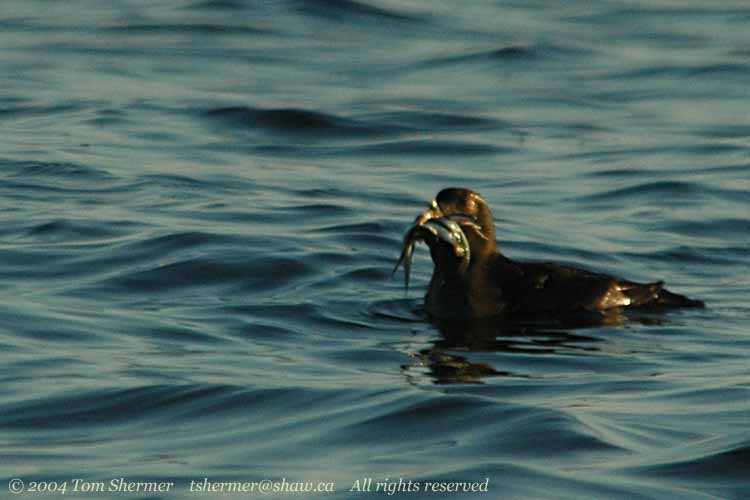 |
|
But if you have a lot
of fish, it's okay to hold them whichever way you want. It seems
to be more important to hold the fish than to be stylish in so
doing.
|
|
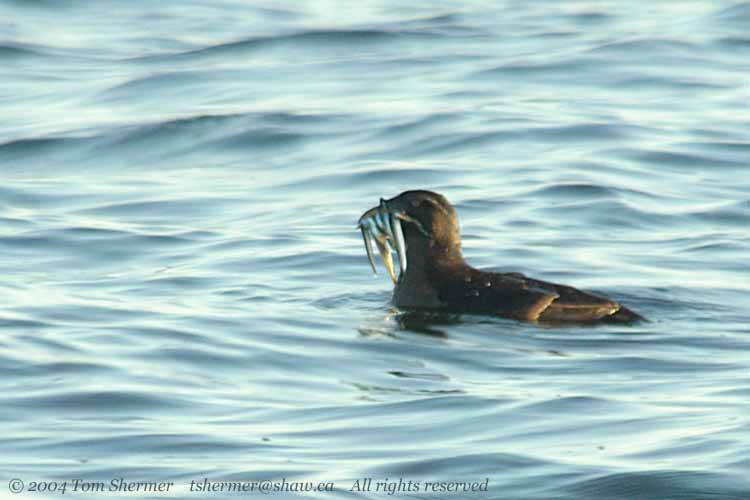 |
|
I saw loads of Rhinos
surface with many fish in mouth. The odd thing was that they didn't
eat them before diving back down after more. I don't think that
they were fishing in order to feed young; I didn't see any young
anywhere.
The Rhinos had to be
careful where they came up. I saw one or two of them lose a fish
to a thieving seagull.
On those three fish-holding
shots, it's pretty easy to see the little upwards protuberance
on the bill that gives the Rhino its name.
The flight of the Rhinos
was interesting. To get started, they run along the water.
|
|
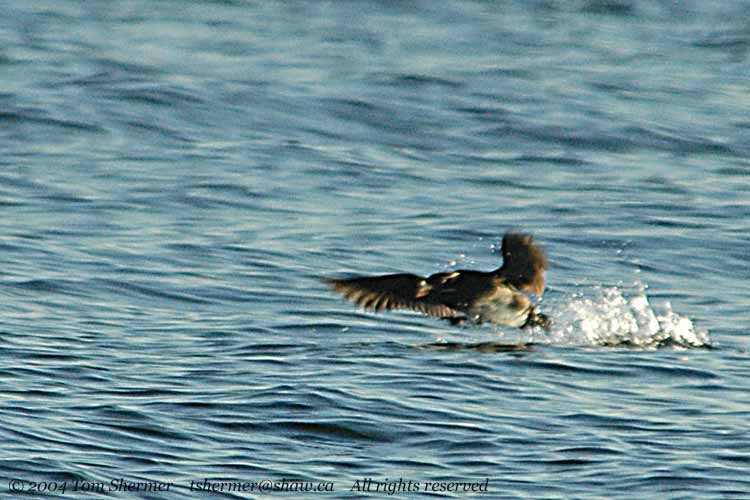 |
| As speed
is gained, they look like they're skipping. |
|
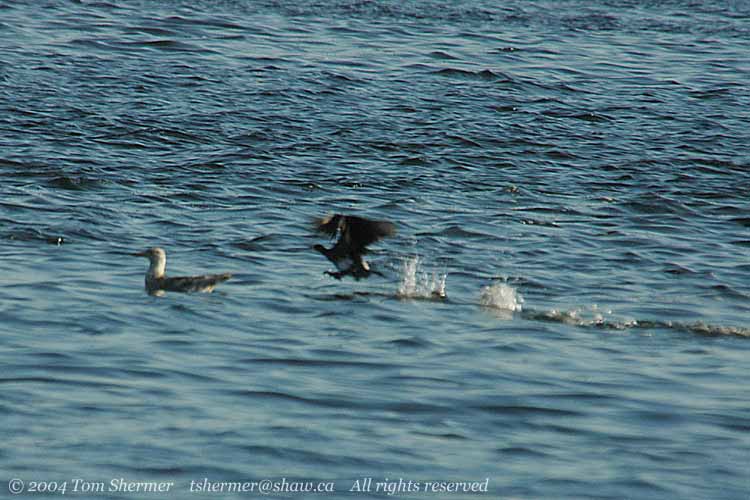 |
|
Once airborne, they
look fairly streamlined (if a bit rotund).
|
|
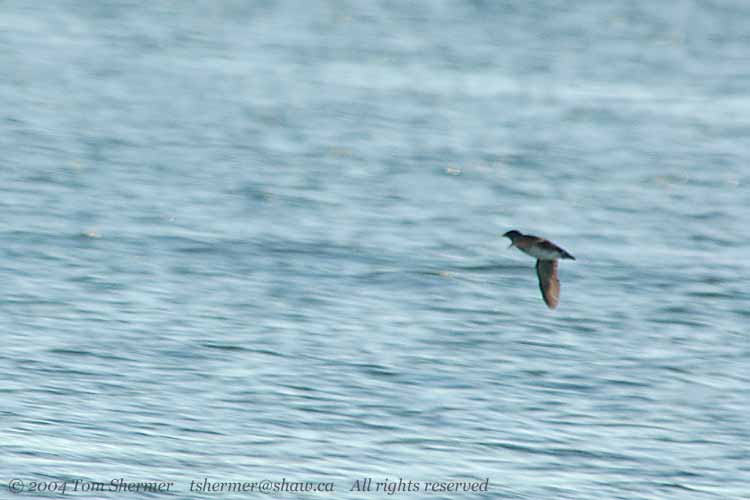 |
|
Landing consists of
a splayed position to get a stall at the right moment. Try not
to run into the gulls.
|
|
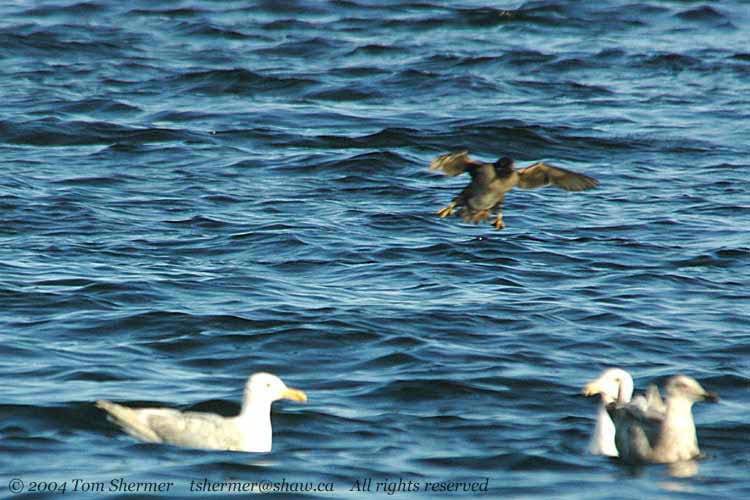 |
|
And it is also possible
to fly and land with fish in the mouth.
|
|
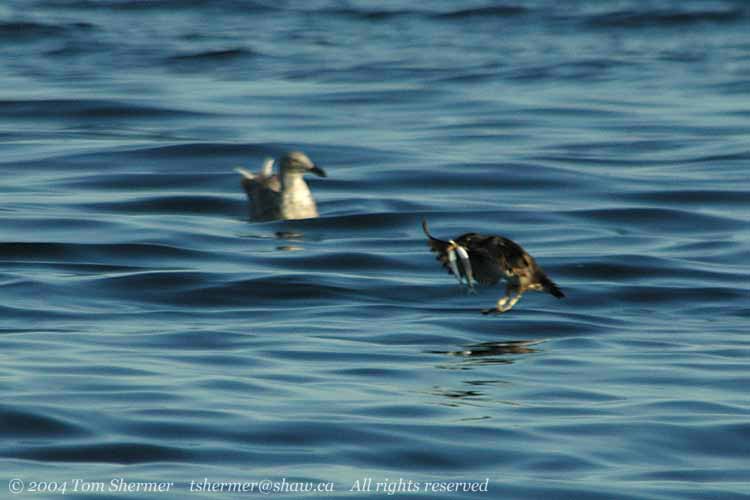 |
|
Notice that that one
uses the correct method--he's holding two fish, by their heads.
His Rhino horn is also lit up, almost looking like an extension
of the fish.
I got to watch the
Rhinos and Gulls for a good two and a half to three hours. The
Rhinos never got closer to shore than about 20 meters, though.
That's good enough for me to get recognizable photos, but not
close enough for a good close up of one.
Several other species
joined in the feeding. There were Harlequin Ducks, and the occasional
Pelagic Cormorant, like this one.
|
|
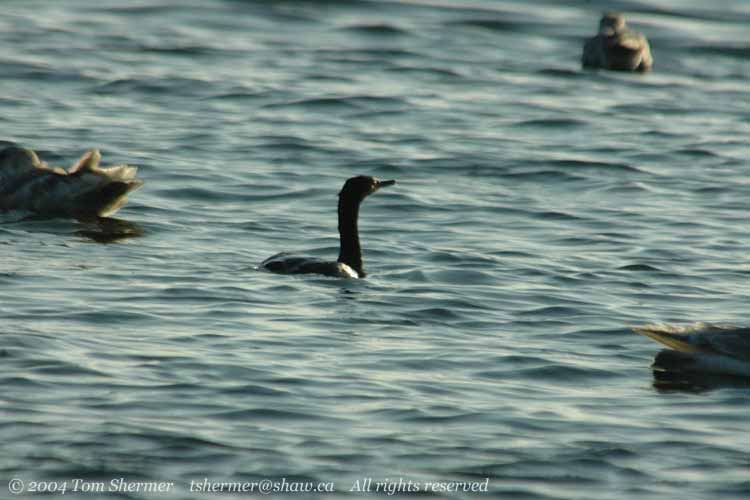 |
|
I like watching the
cormorants dive, because their whole body seems to come up out
of the water and follow their long neck into the water. One day
I'll catch some good shots of cormorants diving.
There was also a seal
that was hanging about...I'd see him from time to time.
|
|
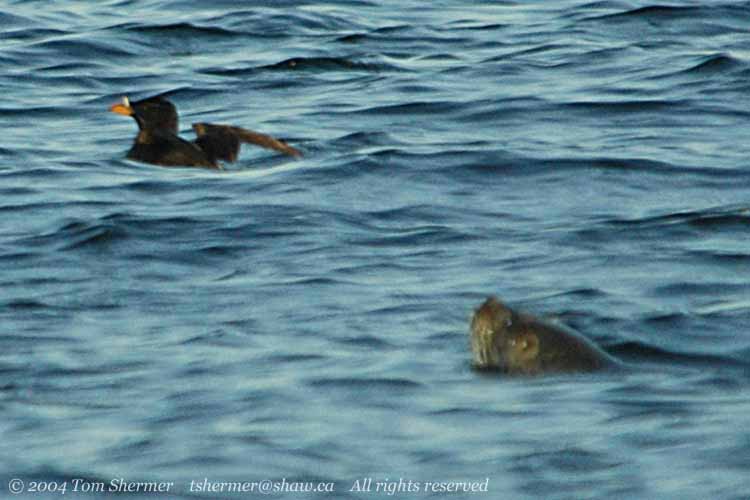 |
| At least,
I think that's a (Harbor) seal...it could be a Steller's Sea Lion.
Seals don't have earflaps, but sea lions do...unfortunately, this
guy's ears were almost always in the water. :-( Oh, well.
Anyhow, it had been
a productive shoot, and I was happy to have gotten to spend so
much time watching the feeding spectacle. The photos had been
difficult to get, mainly because the distance necessitated me
using a teleconverter, which meant manual focus and less light.
(Less light leads to noisier or more blurry photos.) However,
I am satisfied with having gotten the shots I did get. Maybe next
time I'm shooting offshore subjects I'll bring my drysuit or hip
waders and wade in to get closer to the subjects...I just would
have to hope for no surf and a gentle ocean bottom.
(I'm not ready to go
to that extreme yet, but I'm getting there...)
Your wayward field ornithologist,
Tom
|
|
|